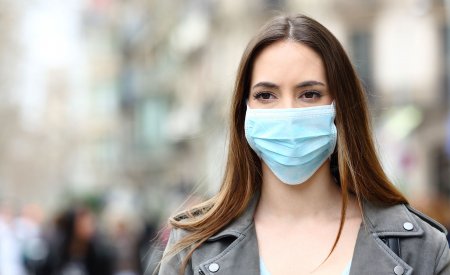Air Pollution & its effect on skin
What is air pollution?
· The World Health Organization defines air pollution as contamination of the indoor or outdoor environment by any chemical, physical, or biological agent that modifies the natural characteristics of the atmosphere.
· UV rays from the sun, polycyclic aromatic hydrocarbons (PAHs), volatile organic compounds (VOCs), nitrogen oxides, particulate matter, and cigarette smoke are the main air pollutants with negative impact on the skin.
· Particulate matter, carbon monoxide, ozone, nitrogen dioxide, and sulphur dioxide are some of the pollutant types, which are most detrimental to health.
Effects of air pollution on the skin:
- Air pollutants can enter the subcutaneous tissue through direct skin absorption, through sweat/sebaceous glands, or through hair follicles.
- When prolonged and repetitive exposure to external stimuli exceeds the skin's typical defensive potential, the skin barrier function is disrupted, leading to the development of numerous skin diseases.
- Air pollutants injure skin by causing more oxidative stress, which compromises the skin's antioxidant capacity.
- There is also reduction of enzymatic (glutathione peroxidase, glutathione reductase, superoxide dismutase and catalase) and non‑enzymatic (Vitamin E, Vitamin C and glutathione) antioxidant capacity.
- Reactive oxygen species and free radicals are produced which induce the production of pro-inflammatory mediators, which in turn produces more free radicals, creating a vicious cycle.
- While UVA and UVB have been related to the development of cutaneous immunosuppression and skin malignancies such malignant melanoma, basal cell carcinoma, and squamous cell carcinoma, respectively.
- UVA is associated with premature ageing of the skin (photoaging) whereas UVB primarily causes sunburn.
- Smoking accelerates the ageing process, which is clinically seen as deeper periorbital wrinkles.
- PAHs have been linked to cancer, acneiform eruption, and extrinsic skin ageing.
- Particulate matter creates oxidative stress in the skin, which causes extrinsic skin ageing.
- VOCs generate from the use of organic solvents in paints and varnishes, car paint, atmospheric tobacco smoke, fuels that have been stored, car exhaust , and emissions from industrial plants. These are associated with atopic dermatitis.
Air Quality index (AQI)
· An important measure for air pollution is AQI, which is based on five key air pollutants regulated by the Clean Air Act: ground level ozone, particulate matter, carbon monoxide, sulphur dioxide, and nitrogen dioxide.
· Its value ranges from 1 to 500, with higher numbers denoting greater air pollution.
· An air quality index number over 300 indicates hazardous air quality, whereas a value of 50 indicates good air quality with some risk to public health.
1. How to protect skin from pollution
· Some initiatives which can be implemented for reduction of air pollution include:
o less use of personal vehicles,
o more use of carpools and public modes of transportation,
o the provision of low sulphur fuel,
o relocation of industry away from cities,
o creation and use of ecofriendly industrial machines and procedures,
o Prohibition of open waste combustion, smoking, and the use of wood and crop leftovers as fuel for family cooking and heating
2. Personal protection strategies include:
o physical photoprotection,
o the use of sunscreens,
o the avoidance of areas with public smoking and surrounding industry,
o the use of topical antioxidants such as vitamin C and E in formulations alongside sunscreen,
o The use of indoor air purifiers and ventilators
o Masks should be used while working for people in high-risk occupations like traffic officers and sweepers.
Bioderma offers range of skincare products for different skin types such as sensitive skin, combination to acne-prone skin, normal dry, irritated to atopic skin.
